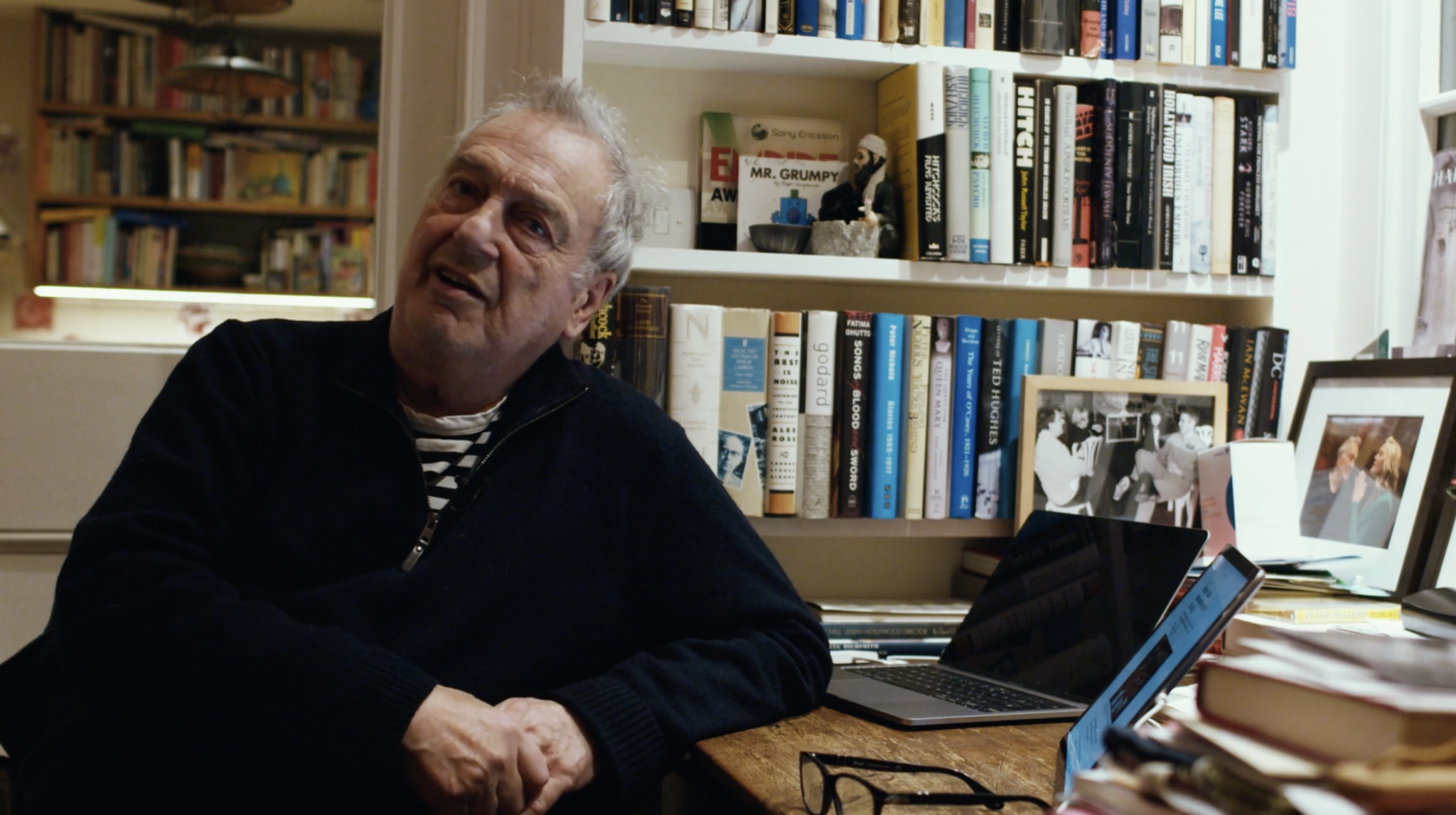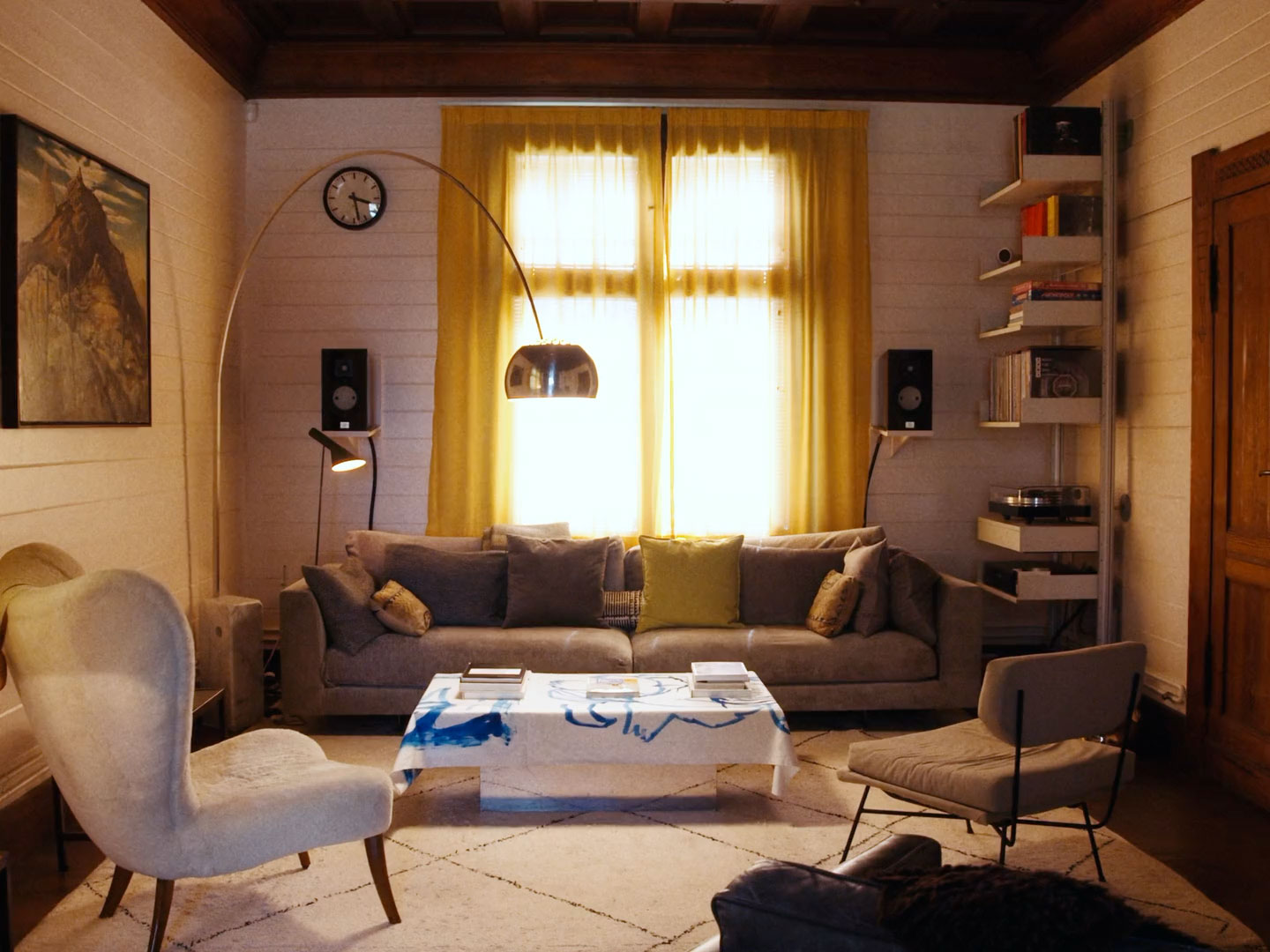
The provocative filmmaker Chantal Akerman wasn’t concerned with classic labels. Actually, she actively resisted them. In constant determination to find her own identity, the Jewish, lesbian, feminist director Akerman was most interested in her experiences as a daughter. It goes without saying that her sexuality played an integral role in her filmmaking, with many of her female protagonists engaging in queer romance, but it was her relationship with her mother that had such a significant impact on the stories she wished to tell.
In 2013, Akerman published the book, My Mother Laughs, documenting their experiences during her mother’s final years. Reading this biography not only allows for a clearer understanding of the pair’s relationship but helps bring to the forefront the character behind Akerman’s artistic inspiration.
Akerman’s filmography is one rooted in reality. As a pioneer of slow cinema, her exquisitely crafted long shots allow the viewer to reflect on her familiar topics of the monotony of daily life, isolation, and the journey of human connection. Thus, by exploring her relationship with her mother, further examined by reading My Mother Laughs, we as an audience have a closer understanding of the roots of the filmmaker’s distinct subject matter.

In the book, Chantal Akerman’s frustration with this theme, which has engulfed much of her artistic work, is clear. She explains that writing should be “the only thing that can save me” from her mother’s overbearing nature, “and even then,” she states, “when I write it’s about her and so it doesn’t give me the sort of release that people who don’t write might imagine.”
Akerman’s mother acted as a muse for much of her career. She made several documentaries based around her and their relationship and was the inspiration behind many of her fictional films. Yet, there was plenty of emotional distance between the two. Natalie “Nelly” Akerman was a Holocaust survivor who lost both her parents in Auschwitz, an experience she never discussed directly with her daughter, leading to Chantal feeling isolated during her youth. In a 2011 interview with French film theorist Nicole Brenez, she spoke candidly about her relationship with Nelly, explaining that she was “born into trauma” after her parents moved back to Brussels following the war. “My mother never let me negotiate a real separation from her–or maybe I’m the one who couldn’t do it, as I have trouble even existing,” Akerman stated.
But in My Mother Laughs, the filmmaker writes of the closeness between them growing up, and how she “loved her so much when she was young.” She explains that “she would ask me if she looked OK. Yes, you beautiful… and I would talk to her, tell her rubbish anecdotes.” Nevertheless, their dynamic changed, and Akerman analyzed her later internal battle by exploring this topic in her films.
Embracing the desire to distance herself from her mother and discover the world away from home was documented in 1977 in News from Home, while tackling the isolation which accompanies this form of independence was a key concept in her first fictional feature film Je Tu Il Elle (I, You, He, She) in 1974. Both are masterpieces of slow cinema, with their long shots highlighting the passage of time and the monotony of modern life.
While Je Tu Il Elle is a piece of fictional work and News from Home is more grounded in the filmmaker’s real experiences, they can be viewed as a dialogue between their two central characters. Both the protagonist, Julie, in Je Tu Il Elle, played by Akerman herself, and her mother who we engage with through the letters she writes to her daughter, in News From Home, carry a sense of loneliness and a desire to find human connection.
In the first act of Je Tu Il Elle, Akerman’s character is in self-imposed isolation, trapped in her apartment with weeks passing without leaving her home. Consumed by boredom, she rearranges the furniture, writes, and frantically rewrites a letter, all the while eating powdered sugar from a bag, in various stages of undress. It is only once Julie’s supply of powdered sugar runs dry does she begin to feel hungry, finally embarking on a road trip. On this journey, she hitchhikes a ride from a truck driver, travels with him, later giving him a hand job. Julie then visits her ex-girlfriend, has passionate sex with her, and in the film’s final scene leaves the next morning while her lover lays fast asleep.

As well as focusing on the loneliness of the central character, the film is also deeply erotic and helped pioneer a new wave of queer cinema, with the sex scene between Julie and her ex-girlfriend being the first graphic lesbian sex scene in mainstream cinema. In an interview with A Rabbit’s Foot, Ira Sachs, director of the critically acclaimed drama Passages, which itself is wonderfully explicit, explained that Je Tu Il Elle was one of the cinematic inspirations behind his film, further illustrating Akerman’s importance to the genre.
Although the erotic scene in Je Tu Il Elle highlights the filmmaker’s provocative aesthetic and her central character’s desire for human connection, there is still a level of distance between the characters. Je Tu Il Elle is an explicit film, with lengthy scenes of sexual intimacy, while containing little emotional intimacy within the story. There is not much dialogue within the film; Julie narrates more to the audience than she speaks to her lovers. In My Mother Laughs, Akerman also explores her challenging relationship with her girlfriend C, which seemingly borderlines cruelty. She writes of when she told her girlfriend “I don’t love you anymore” after ignoring that her “beautiful face had become dark and tragic.” “She was bleeding, and I hadn’t even noticed,” Akerman explains. This casual and distant approach to her partner’s needs illustrates her personal difficulty with emotional intimacy, suggesting that there are few dissimilarities between herself and the character she portrays in Je Tu Il Elle.
In the film, during the protagonist’s solitude, in a ground-floor apartment, we can hear the city, children playing, cars driving by, and strangers muffled conversation, adding to a sense of isolation. Yet for much of the story, Julie does not wish to leave her home and finally chooses to be alone, eventually walking away from her past lover. The lack of emotional intimacy in Julie’s two sexual relationships emphasizes her loneliness, but when she leaves smiling with a nursery rhyme in the background, we are left wondering if her deepest desire is simply isolation. In My Mother Laughs, Akerman reflects on the relationship between her own self and her filmography. She explains that someone told her how she obviously puts a lot of herself into her films, which she hadn’t realized since she claims she doesn’t even know herself. “Whenever I finish a film, I felt that I’d only left a small trace. I needed to leave a trace; I really did,” Akerman states. This suggests that’s the isolation captured in Je Tu Il Elle, reflects her own pessimistic attitude towards real human connection.
Julie’s journey to leave her lonely apartment and find companionship, which ultimately falls short of real human connection, is reminiscent of the scenes of New York in Akerman’s News from Home. The documentary consists of long shots of New York, taken during the filmmaker’s time living there, until 1972. Overlaying the footage and sounds of the streets, subway, and diners, she reads her mother’s letters. Much of these letters focuses on her wish for her daughters return. The film starts with a letter saying, “I hope you won’t stay away too long and that you’ve found a job by now,” as her mother asks, “When will you be back?”
Similar to the opening act of Je Tu Il Elle, her mother’s letters illustrate a passage of time, during which little seemingly occurs. She describes the events of her community, writing about engagements, trips to the sea, illnesses within her family, yet as the letters continue, spanning two years, there is a notable sense of loneliness within her mother’s words. As the seasons pass, she continues to regularly correspond with her daughter, writing, “I miss you and hope to see you soon.” She desperately asks her to write back more frequently, and answer her questions, including questions about her living situation and employment. The loneliness exposed in her letters, as she tells her daughter “Don’t forgot about us,” is mirrored with long shots of New York, depicting scenes of people in crowded public places, rarely interacting with one another.
Akerman’s News from Home confuses her mother, on the one hand she writes that she is happy her daughter is enjoying her time there so much and is glad that she is making “so many new friends.” However, she also writes that her father is worried she’s lonely. We as the audience know little about Akerman herself, the unseen character in News From Home. However, by watching Je Tu Il Elle, made shortly after her time in New York, we can imagine Akerman as the film’s central character, locking herself away from the outside world, as the city passes by, or experiencing sexual relationships devoid of real human connection.
Both Akerman and her mother’s journey to find human connection is reminiscent of their own relationship and experiences of isolation. “Maybe my mother and I were too bonded, a bond that was fatal for me,” the filmmaker writes. Although she later clarified that this statement “isn’t strictly true,” this question posed, and the emotional distance between the two women, are concepts Akerman attempts to explore not only in My Mother Laughs, but also in her previous filmography. Looking at these pieces of pioneering cinema, and the two central characters, both Je Tu Il Elle and News From Home similarly depict isolation and loneliness, suggesting that this is a common characteristic of the female experience.












